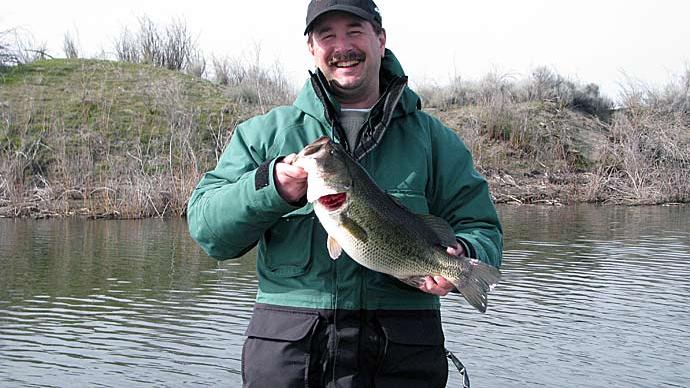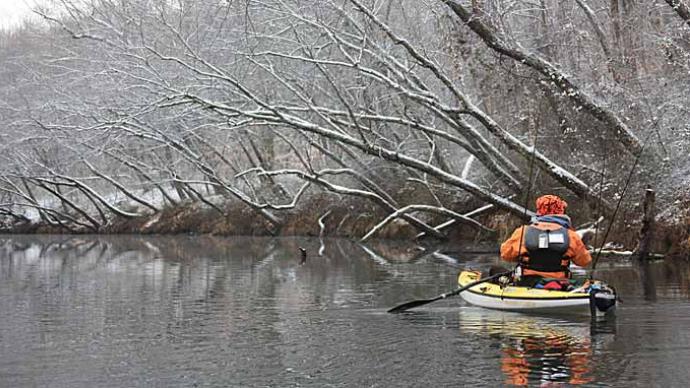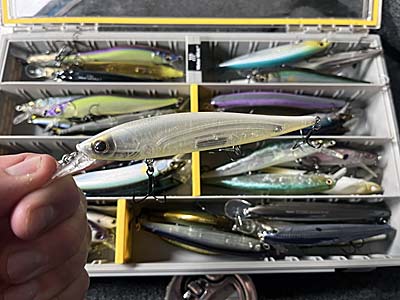
It's January, which may mean that your lakes are frozen over, and the only fish you'll catch will be through the ice. In other parts of the country, fishing can still be good in open water, but you'll have to adjust compared to fishing in other parts of the year.
That means sticking with tried and true lures that will get a bass to bite when the water is the coldest it will be all year. These five bait styles have proven their worth in January and should be musts when packing your gear for your next winter bass fishing trip.
Jerkbaits
The jerkbait is an excellent cold-weather bait, especially because today's lures are so realistic and weighted to suspend at rest. You can fish them quickly to get them to dart and act erratically, just like a dying or injured baitfish, and then pause them. Since many suspend, you can get a bass's attention and let it rest to get them to inspect it.
Often, a long pause will be better in cold water, and some anglers will let the bait for ten seconds or more before resuming the retrieve. Like everything else, it sometimes pays to experiment with different retrieves and lengths of pauses to see what gets bass to bite that day.
Jerkbaits do well in the winter months, and all year because they imitate baitfish, and it pays to match your bait's color to what the fish eat in the body of water, you are fishing. In addition to matching baitfish hues, choosing jerkbait colors based on water clarity and weather conditions helps trigger more bite.
Flashy colors can do well on sunny days, and muted and solid colors do well in cloudy conditions. For clear water, more translucent colors tend to do better, and solid colors like pearl white shine when the water is slightly stained.
Jigs
Image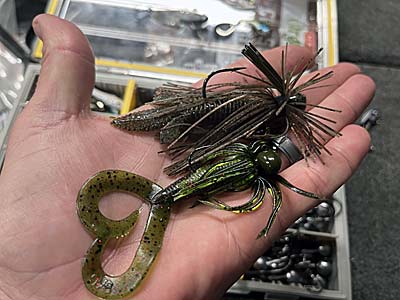
Both skirted jigs and soft plastics rigged on football jigheads are great for wintertime fishing and look just like a crawfish. Jigs are great for cold-weather fishing because they can be crawled along the bottom like a crawfish. When fishing in January, a finesse jig or football jig can be your best friend because you can fish them around all types of cover, including rock, and fish them as deep as you please, just alter your size to make things easier on you. A half-ounce size is a good starting point, but feel free to go lighter or heavier depending on your fishing depth. For deep water over 40 feet, a ¾ or even 1-ounce can get you there much faster.
Standard skirted jigs and soft plastics like the Yamamoto Hula Grub on a football jighead are excellent choices. These are the perfect way to imitate a crawdad scurrying along the bottom. One of the best approaches is to fish them in places where they live, along bluff walls, around chunk rock, and other areas where a crawdad could hide. This is where the bass will be looking for food, and a jig is a great tool to catch them this month. If going with a skirted jig, match it with a soft plastic that imitates crawfish and looks like pinchers. Some good ones are chunk-style trailers like the Zoom Super Chunk, Z-Man TRD BugZ, or Berkley PowerBait Maxscent Meaty Chunk.
The "Damiki Rig"
Image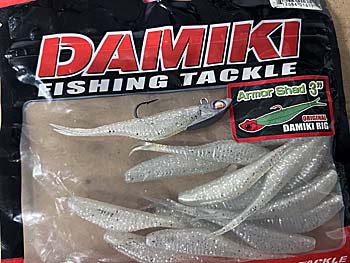
The bait and jighead that started a major craze in bass fishing and also one of the best rigs you can fish in January. One recent trend in bass fishing is using a small fluke-style bait on a jighead. It has taken over the fishing world in recent years, and there are many ways to fish them, and they are often used interchangeably. Some terms for this way of fishing include 'tight-lining,' 'mid-strolling,' 'moping,' and the 'Damiki Rig' named after the Damiki Armor Shad and Damiki Rig Jig Head that helped popularize the technique.
While each technique is technically different, they generally mean fishing for suspended bass with these baitfish-imitating baits on a jighead. The 'Damiki Rig' can be fished vertically, and one key is to utilize your electronics and keep the bait just above the fish you see on your screen, often just holding it still without too much jigging or added movement. Since bass often look up to feed on baitfish, they are likelier to rise to the bait than chase it down past them when the water is cold.
Drop-shot
Image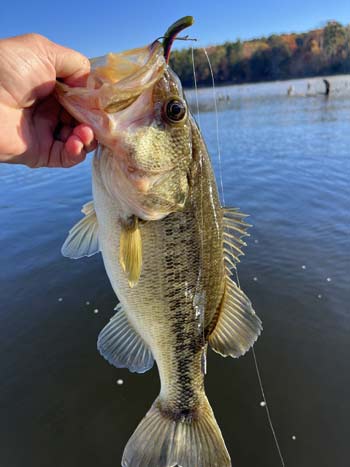
A drop-shot rig shines in all seasons and will catch plenty of fish during January. The drop-shot is a player every month of the year and can be one of your best friends during the colder months. Generally, a slower approach and smaller soft plastic are better for January, when the bass are less active and do not want a big meal.
Instead of a larger worm and constant shake that may work in warmer months, try slowly crawling the drop-shot along the bottom with minimal rod movements. Downsized soft plastics like straight-tail worms and smaller baits like a Berkley PowerBait MaxScent Flat Worm or Yamamoto Shad Shape Worm are fantastic this time of year.
Blade Baits, Spoons, and Tail Spinners
Image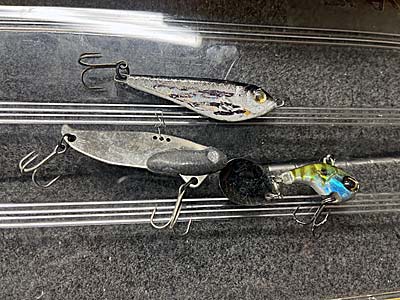
January is a time to bust out the metal baits. These three are different but the same as they shine during January bass fishing trips, especially when fishing vertically in deep water. While they could all theoretically be used in any month, they are tailor-made for fishing in frigid waters.
Spoons can be fished vertically right below the boat and are great for imitating a dying shad, which bass always seek. Tail spinners and blade baits get bites because they put off significant vibration and appeal to cold-water bass. You can't miss with either of these three proven wintertime bass lures.
If you can get out this month, the bass fishing can be excellent when the conditions align. Fishing during January can be hit or miss due to the weather, but these five baits have proven they work when the water is cold.


